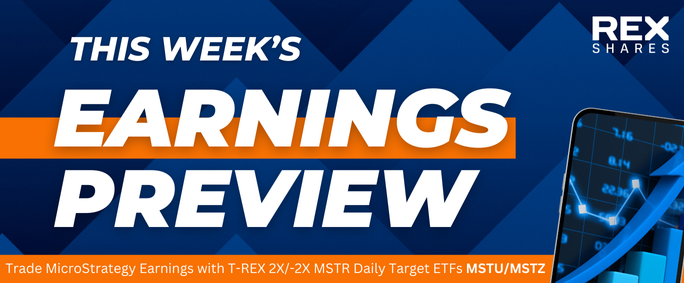MicroStrategy Earnings Tonight: Everything You Need to Know

Date: 10/30/2024, After Market Close
Introduction
This afternoon, MicroStrategy is set to report its earnings after the bell. Known for its substantial Bitcoin holdings, MicroStrategy, with a market cap of $52 billion, has positioned itself uniquely in the tech and cryptocurrency sectors. Investors will be watching closely for insights into the company’s Bitcoin strategy and any developments in Artificial Intelligence initiatives. Let’s dive into what to expect from MicroStrategy’s report this afternoon.
MicroStrategy Overview
MicroStrategy made waves in 2020 by adopting Bitcoin as its primary treasury asset, making it one of the first companies to do so. Today, the company holds 252,000 Bitcoin, up from 158,000 last year, with plans to grow this number through a strategy of equity and debt funding. Its goal is to accumulate Bitcoin faster than it issues shares, with a focus on the long-term potential of Bitcoin in finance and politics.
MicroStrategy Fundamentals
While Bitcoin is the company's key focus, MicroStrategy’s software and business intelligence services remain the backbone of it's revenue. For this quarter, expected revenue is $122.5 million, with Product Support as the largest segment estimated to contribute $63.46 million in revenues. Subscription services revenues are to grow steadily, projected to bring in $26.05 million, up from $20.97 million last year. MicroStrategy is not expected to generate a profit this quarter.
Bitcoin
MicroStrategy continues to build on its Bitcoin strategy with a dedicated metric, the "BTC Yield", to track growth in Bitcoin holdings as a ratio to fully diluted outstanding shares. This KPI measures the percentage increase in Bitcoin per outstanding shares, with a target of 4-8% annually. In a recent interview MicroStrategy Executive Chairman, Michael Saylor, stated the company has generated close to 18% Bitcoin yield this year. Investors should watch for indications of future Bitcoin purchases.
Q3 Earnings Estimates
Adjusted EPS: $-0.11
Q3 '23 EPS: $-0.90
Q3 Revenue Estimates
Revenue: $122.50M
Q3 '23 Revenue: $129.46M

*Estimates and Data retrieved from Bloomberg 10/15/2024
Trade MicroStrategy Earnings with T-REX!
The T-REX 2X Long MSTR Daily Target ETF (the “Fund”) seeks daily leveraged investment results and is very different from most other exchange-traded funds. As a result, the Fund may be riskier than alternatives that do not use leverage because the Fund’s objective is to magnify (200%) the publicly-traded common stock of MicroStrategy Inc. (NASDAQ: MSTR) (“MSTR”).
The T-REX 2X Inverse MSTR Daily Target ETF (the “Fund”) seeks daily inverse investment results and is very different from most other exchange-traded funds. The pursuit of daily inverse investment goals means that the return of the Fund for a period longer than a full trading day may have no resemblance to (-200%) of the return of the publicly-traded common stock of MicroStrategy Inc. (NASDAQ: MSTR) (“MSTR”).
The Fund seeks daily investment results, before fees and expenses, of 200% of the inverse (or opposite) of the daily performance of MSTR. The Fund does not seek to achieve its stated investment objective for a period of time different than a trading day.
Investing in the Funds is not equivalent to investing directly in MSTR.
A link to the funds prospectus can be found here. Click here for fund holdings.
Important Information:
PERFORMANCE DISCLOSURE
Shares of the REX Shares ETFs are bought and sold at market price (not NAV) and are not individually redeemed from a Fund. Market Price returns are based upon the midpoint of the bid/ask spread at 4:00 pm EST (when NAV is normally calculated) and do not represent the returns you would receive if you traded shares at other times. Brokerage commissions will reduce returns. Fund returns assume that dividends and capital gains distributions have been reinvested in the Fund at NAV. Some performance results reflect expense reimbursements or recoupments and fee waivers in effect during certain periods shown. Absent these reimbursements or recoupments and fee waivers, results would have been less favorable.
AFTER-TAX AND AFTER-TAX, POST SALES RETURNS
Tax-adjusted returns and tax cost ratio are estimates of the impact taxes have had on a fund. We assume the highest tax rate in calculating these figures. These returns follow the SEC guidelines for calculating returns before sale of shares. Tax-adjusted returns show a fund’s annualized after tax total return for the one, three and five year periods, excluding any capital-gains effects that would result from selling the fund at the end of the period. To determine this figure, all income and short-term capital gains distributions are taxed at the maximum federal rate at the time of distribution. Long-term capital gains are taxed at a 15% rate. The after tax portion is then assumed to be reinvested in the fund. State and local taxes are not included in our calculations. For more information, please consult your tax consultant.
INVESTMENT RISKS
Investing in the Funds involves a high degree of risk. As with any investment, there is a risk that you could lose all or a portion of your investment in the Funds.
An investor should carefully consider a Fund’s investment objective, risks, charges, and expenses before investing. A Fund’s prospectus and summary prospectus contain this and other information about the REX Shares. To obtain a Fund’s prospectus and summary prospectus call 1-844-802-4004. A Fund’s prospectus and summary prospectus should be read carefully before investing.
Investing in a REX Shares ETF may be more volatile than investing in broadly diversified funds. The use of leverage by a Fund increases the risk to the Fund. The REX Shares ETFs are not suitable for all investors and should be utilized only by sophisticated investors who understand leverage risk, consequences of seeking daily leveraged, or daily inverse leveraged, investment results and intend to actively monitor and manage their investment.
Fixed Income Securities Risk. When the Fund invests in fixed income securities, the value of your investment in the Fund will fluctuate with changes in interest rates. Typically, a rise in interest rates causes a decline in the value of fixed income securities owned by the Fund.
Effects of Compounding and Market Volatility Risk. The Fund has a daily leveraged investment objective and the Fund’s performance for periods greater than a trading day will be the result of each day’s returns compounded over the period, which is very likely to differ from +/-200% of MSTR’s performance, before fees and expenses.
Leverage Risk. The Fund obtains investment exposure in excess of its net assets by utilizing leverage and may lose more money in market conditions that are adverse to its investment objective than a fund that does not utilize leverage. An investment in the Fund is exposed to the risk that a decline in the daily performance of MSTR will be magnified. This means that an investment in the Fund will be reduced by an amount equal to 2% for every 1% daily decline in MSTR, not including the costs of financing leverage and other operating expenses, which would further reduce its value.
Derivatives Risk. Derivatives are financial instruments that derive value from the underlying reference asset or assets, such as stocks, bonds, or funds (including ETFs), interest rates or indexes. Investing in derivatives may be considered aggressive and may expose the Fund to greater risks, and may result in larger losses or small gains, than investing directly in the reference assets underlying those derivatives, which may prevent the Fund from achieving its investment objective.
Indirect Investment Risk. MicroStrategy Inc. is not affiliated with the Trust, the Adviser or any affiliates thereof and is not involved with this offering in any way, and has no obligation to consider the Fund in taking any corporate actions that might affect the value of the Fund. The Trust, the Fund and any affiliate are not responsible for the performance of MicroStrategy Inc. and make no representation as to the performance of MSTR. Investing in the Fund is not equivalent to investing in MSTR. Fund shareholders will not have voting rights or rights to receive dividends or other distributions or any other rights with respect to MSTR.
Counterparty Risk. A counterparty may be unwilling or unable to make timely payments to meet its contractual obligations or may fail to return holdings that are subject to the agreement with the counterparty. If the counterparty or its affiliate becomes insolvent, bankrupt or defaults on its payment obligations to the Fund, the value of an investment held by the Fund may decline. Additionally, if any collateral posted by the counterparty for the benefit of the Fund is insufficient or there are delays in the Fund’s ability to access such collateral, the Fund may not be able to achieve its leveraged investment objective.
Industry Concentration Risk. Each Fund will be concentrated in the industry to which its underlying security is assigned (i.e., hold more than 25% of its total assets in investments that provide long leveraged, inverse or inverse leveraged exposure, as applicable, to the industry to which its underlying security is assigned). A portfolio concentrated in a particular industry may present more risks than a portfolio broadly diversified over several industries.
Important Information Regarding 2X MSTR Fund. The T-REX 2x Long MSTR Daily Target ETF (MSTU) seeks 2X% daily leveraged investment results and thus will have an increase of volatility relative to the MSTR performance itself. Longer holding periods, higher volatility of MSTR and leverage increase the impact of compounding on an investor’s returns. During periods of higher volatility, the volatility of MSTR may affect the fund’s performance.
Important Information Regarding -2X MSTR Fund. The T-REX 2X Inverse MSTR Daily Target ETF (MSTZ) seeks daily inverse investment results and is very different from most other exchange-traded funds. Longer holding periods and higher volatility of MSTR increase the impact of compounding on an investor’s returns. During periods of higher volatility, the volatility of MSTR may affect the fund’s return as much as, or more than, the return of MSTR.
Liquidity Risk. Holdings of the Fund may be difficult to buy or sell or may be illiquid, particularly during times of market turmoil. Illiquid securities may be difficult to value, especially in changing or volatile markets.
Non-Diversification Risk. The Fund is classified as “non-diversified” under the Investment Company Act of 1940, as amended. This means it has the ability to invest a relatively high percentage of its assets in the securities of a small number of issuers or in financial instruments with a single counterparty or a few counterparties.
New Fund Risk. As of the date of this prospectus, the Fund has no operating history and currently has fewer assets than larger funds. Like other new funds, large inflows and outflows may impact the Fund’s market exposure for limited periods of time.
Information Technology Sector Risk. The value of stocks of information technology companies and companies that rely heavily on technology is particularly vulnerable to rapid changes in technology product cycles, rapid product obsolescence, government regulation, and competition, both domestically and internationally, including competition from competitors with lower production costs. In addition, many information technology companies have limited product lines, markets, financial resources or personnel. The prices of information technology companies and companies that rely heavily on technology, especially those of smaller, less-seasoned companies, tend to be more volatile and less liquid than the overall market. Information technology companies are heavily dependent on patent and intellectual property rights, the loss or impairment of which may adversely affect profitability. Additionally, companies in the information technology sector may face dramatic and often unpredictable changes in growth rates and competition for the services of qualified personnel.
Sector Concentration Risk. The trading prices of the Fund’s underlying securities may be highly volatile and could continue to be subject to wide fluctuations in response to various factors. The stock market in general, and the market for technology companies in particular, where applicable, has experienced extreme price and volume fluctuations that have often been unrelated or disproportionate to the operating performance of those companies.
Shorting Risk. A short position is a financial transaction in which an investor sells an asset that the investor does not own. In such a transaction, an investor’s short position appreciates when a reference asset falls in value. By contrast, the short position loses value when the reference asset’s value increases. Because historically most assets have risen in value over the long term, short positions are expected to depreciate in value. Accordingly, short positions may be riskier and more speculative than traditional investments. In addition, any income, dividends or payments by reference assets in which the Fund has a short position will impose expenses on the Fund that reduce returns.
Shorting Risk (T-REX 2X Inverse MSTR Daily Target only). Shareholders should lose money when the underlying security rises, which is a result that is the opposite from traditional index tracking funds. The Fund may enter into short positions designed to earn the Fund a profit from the decline in the price of its underlying security. The Fund will obtain inverse or “short” exposure through the use of swap agreements, which may expose the Fund to certain risks such as an increase in volatility or decrease in the liquidity of the securities or financial instruments of the underlying short position. If the Fund were to experience this volatility or decreased liquidity, the Fund’s return may be lower, the Fund’s ability to obtain inverse exposure through the use of derivatives may be limited or the Fund may be required to obtain inverse exposure through alternative investment strategies that may be less desirable or more costly to implement. If the securities or financial instruments underlying the short positions are thinly traded or have a limited market due to various factors, including regulatory action, the Fund may be unable to meet its investment objective due to a lack of available securities, financial instruments or counterparties. The Fund may not be able to issue additional Creation Units during a period when it cannot meet its investment objective due to these factors. Any income, dividends or payments by the assets underlying the Fund’s short positions will negatively impact the Fund.
Call Writing Strategy Risk. The path dependency (i.e., the continued use) of the Fund’s call writing strategy will impact the extent that the Fund participates in the positive price returns of the underlying reference securities and, in turn, the Fund’s returns, both during the term of the sold call options and over longer time period.
High Portfolio Turnover Risk. The Fund may actively and frequently trade all or a significant portion of the Fund's holdings. A high portfolio turnover rate increases transaction costs, which may increase the Fund's expenses.
Market Price: The current price at which shares are bought and sold. Market returns are based upon the last trade price.
NAV: The dollar value of a single share, based on the value of the underlying assets of the fund minus its liabilities, divided by the number of shares outstanding. Calculated at the end of each business day.
Distributor: Foreside Fund Services, LLC, member FINRA, not affiliated with REX Shares or the Funds’ investment advisor.


